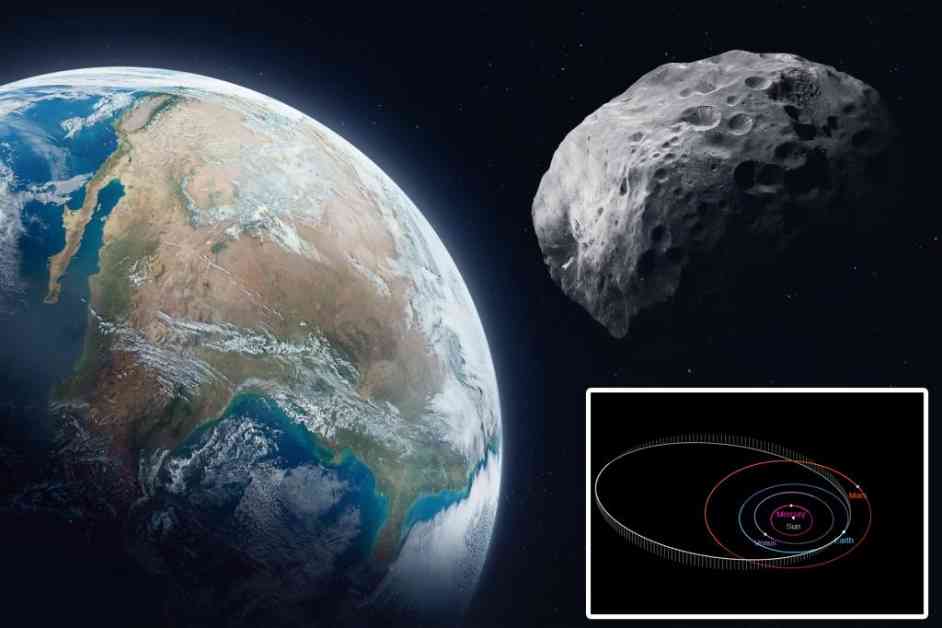NASA Alert: Huge Asteroid to Safely Pass Earth
NASA’s Jet Propulsion Laboratory recently issued a warning about an enormous asteroid that is hurtling towards Earth at an incredible speed. Dubbed 2024 ON, this celestial behemoth measures a whopping 950 feet in diameter, equivalent to the size of a football stadium. Despite its intimidating size, 2024 ON is not a cause for immediate concern as it is projected to pass by our planet at a safe distance.
Close Encounter of the Celestial Kind
The Virtual Telescope Project has been closely monitoring the trajectory of asteroid 2024 ON, capturing its swift movement at an astonishing speed of nearly 25,000 miles per hour. This massive space rock is classified as “potentially hazardous” due to its size and velocity, but experts predict that it will pass approximately 621,000 miles from Earth. To put that into perspective, this distance is about 2.6 times further away than the moon’s average distance from our planet.
Monitoring the Sky for Near Earth Asteroids
Asteroid 2024 ON is just one of five asteroids that have recently come within close proximity to Earth, with the others ranging in size from that of a house to an airplane. These Near Earth Asteroids (NEOs) are defined by NASA as celestial bodies larger than 460 feet in diameter, with orbits that bring them within 4.6 million miles of Earth’s orbit around the sun. While these asteroids may pass relatively close to our planet, the likelihood of a significant impact is minimal.
Despite the potential threats posed by NEOs, NASA reassures the public that there are currently no known dangers of impact from asteroids for the foreseeable future. The space agency continues to monitor the skies diligently to track the movements of celestial objects and assess any potential risks posed by near-Earth asteroids.
Experts emphasize the importance of ongoing observation and research to better understand the behavior of asteroids and their potential impact on Earth. By studying these celestial bodies and their trajectories, scientists can develop strategies to mitigate any potential threats from asteroids that may come too close to our planet.
In conclusion, while the approach of asteroid 2024 ON may sound alarming, there is no need to panic. NASA’s vigilant monitoring and advanced technology allow for the detection and tracking of near-Earth asteroids, ensuring that any potential risks can be assessed and managed effectively. As we continue to explore the vast reaches of our solar system, our understanding of these celestial objects will only improve, helping to safeguard our planet from any potential cosmic threats.
